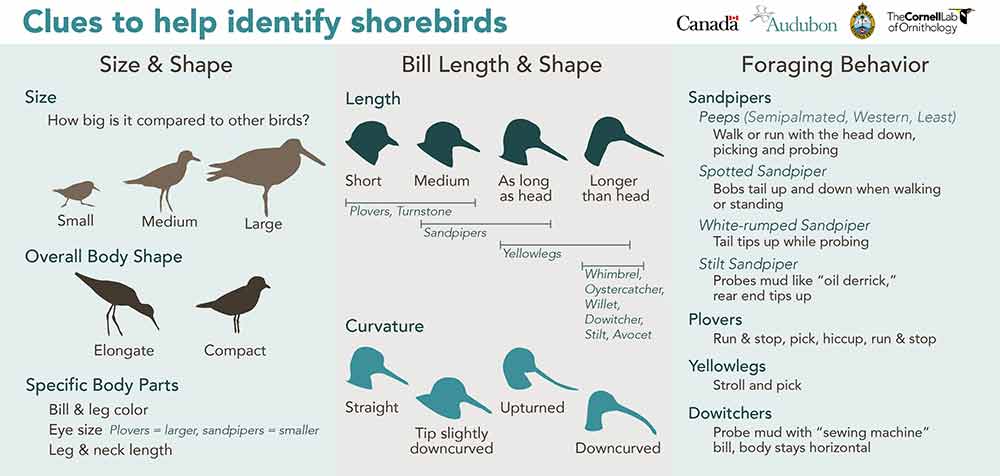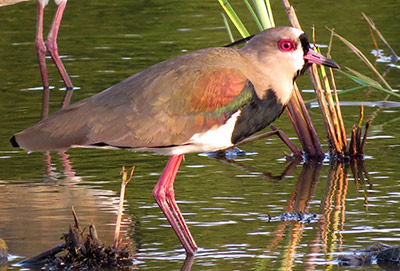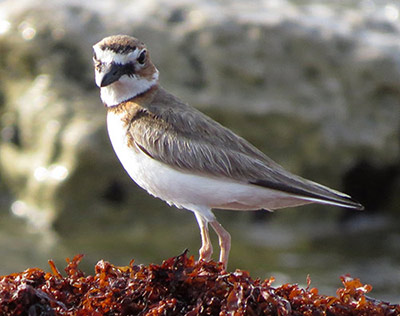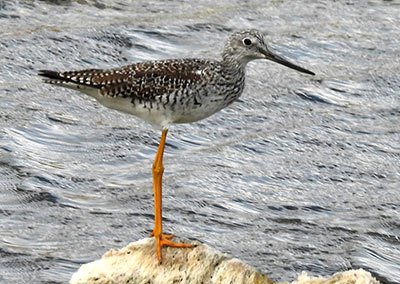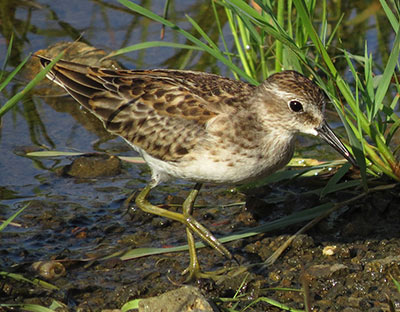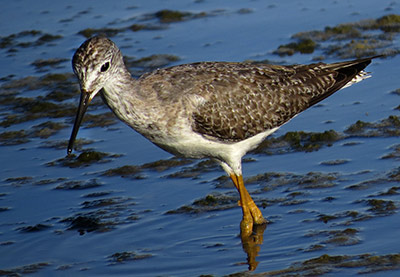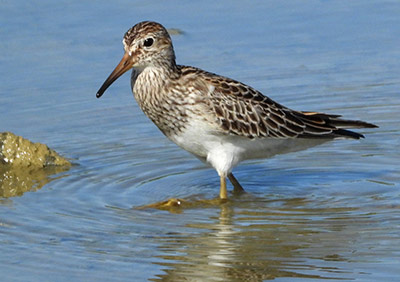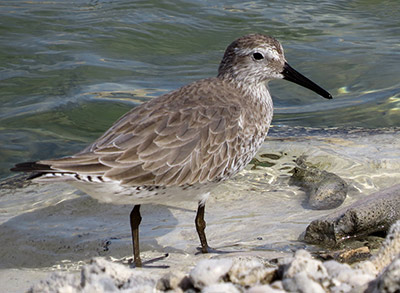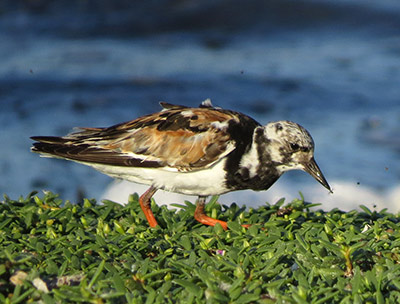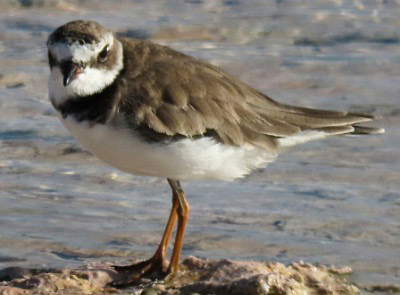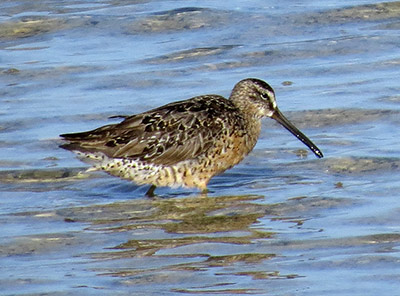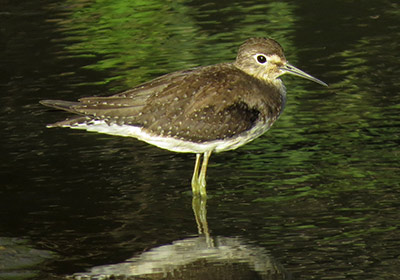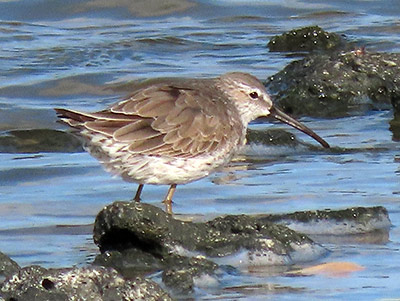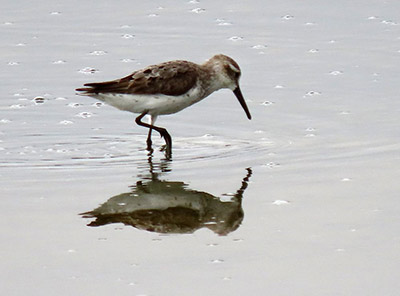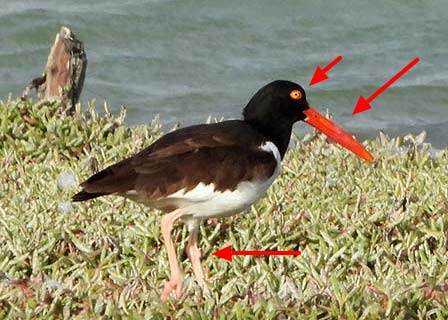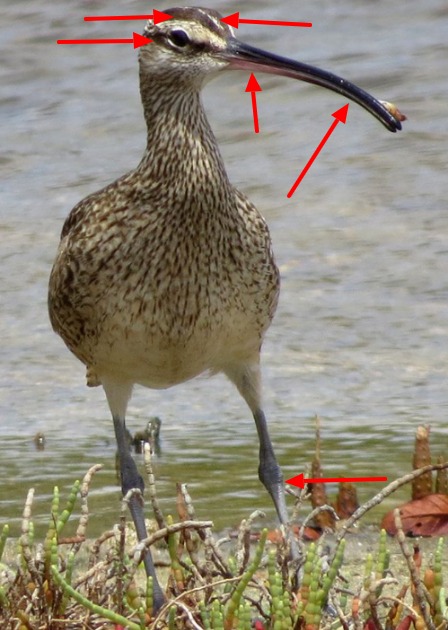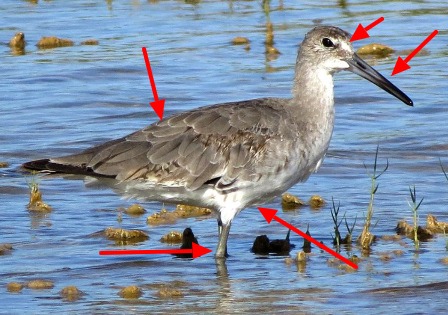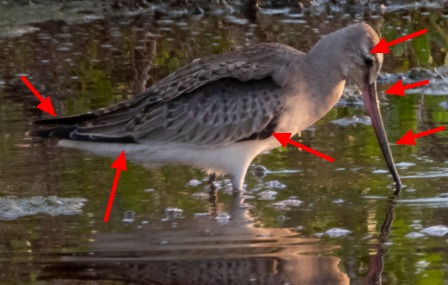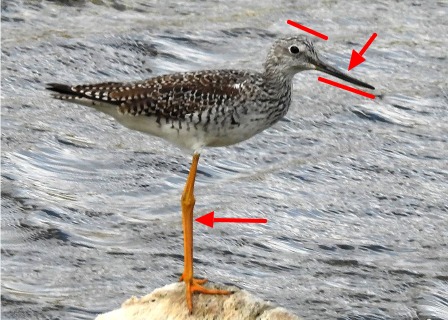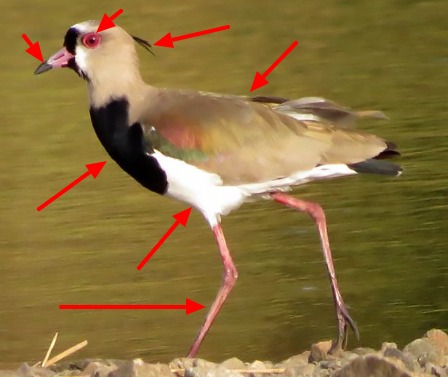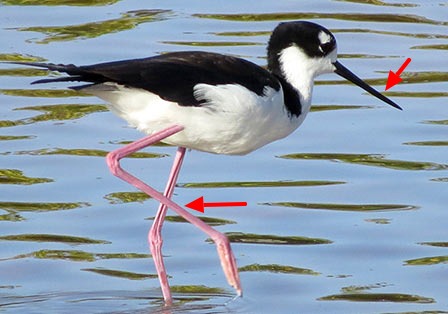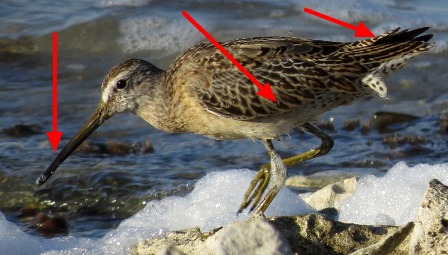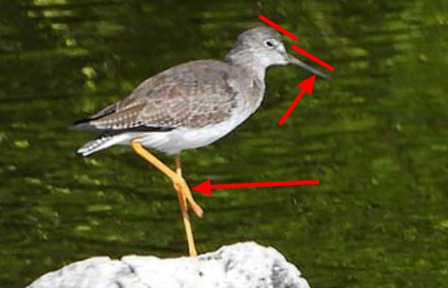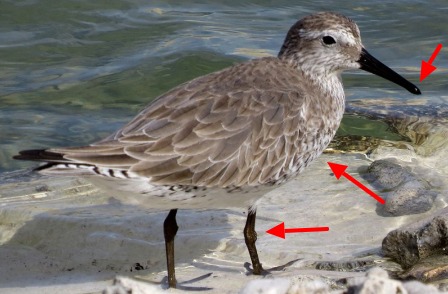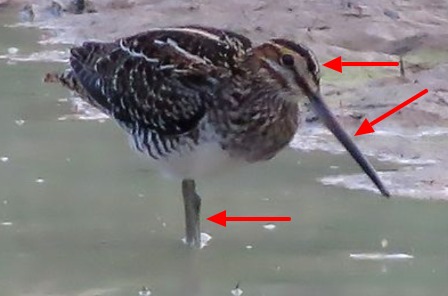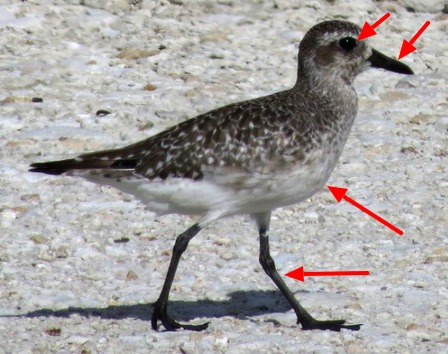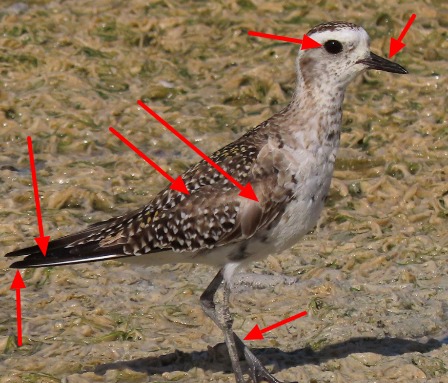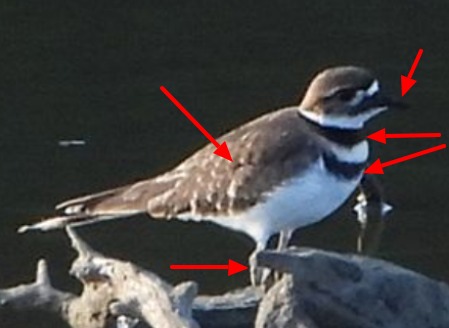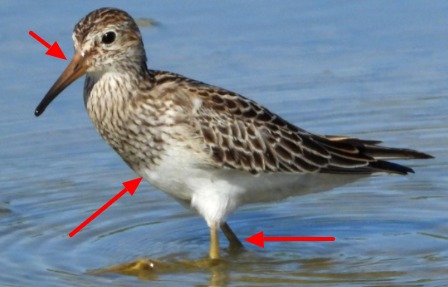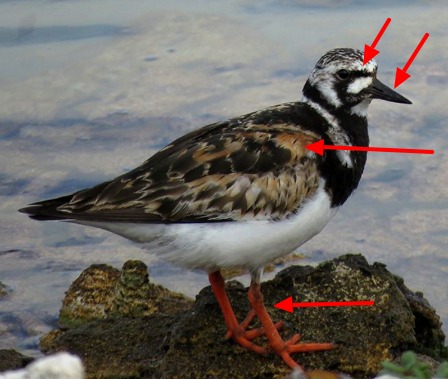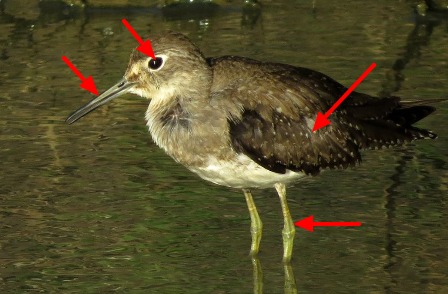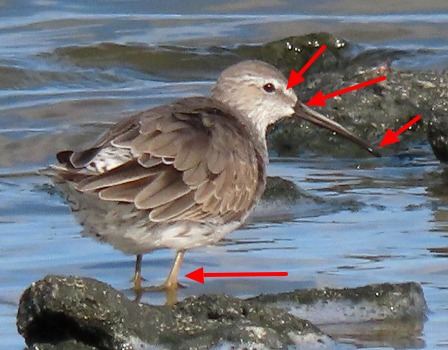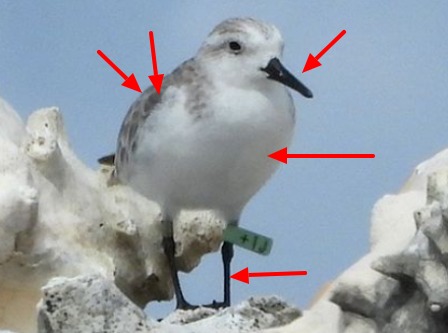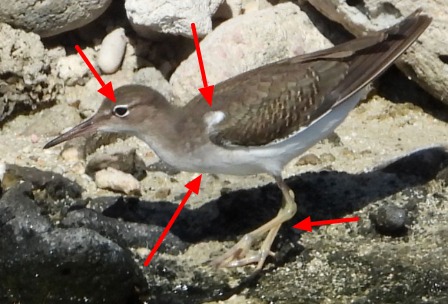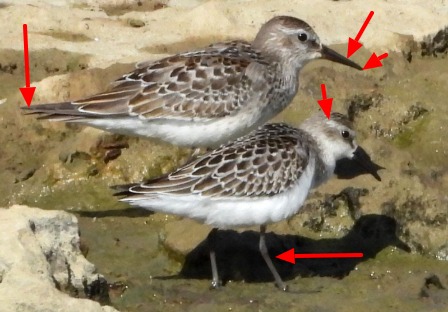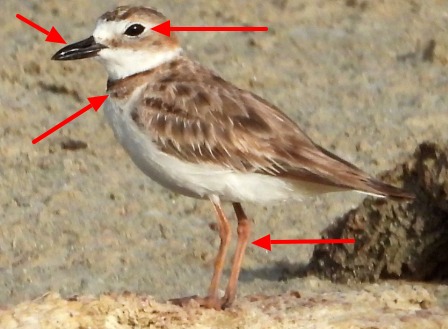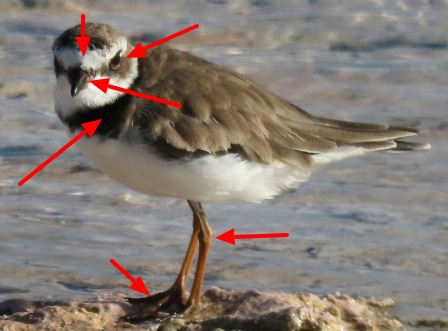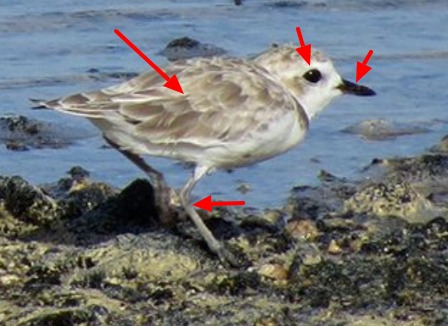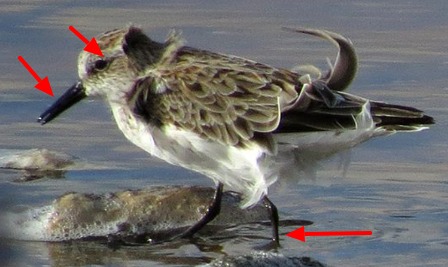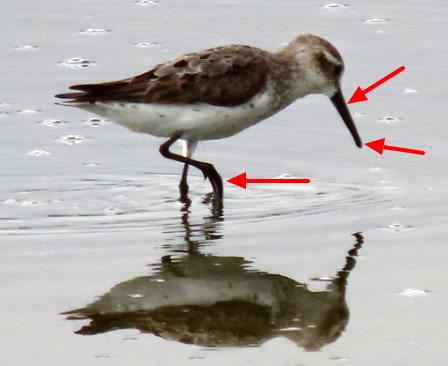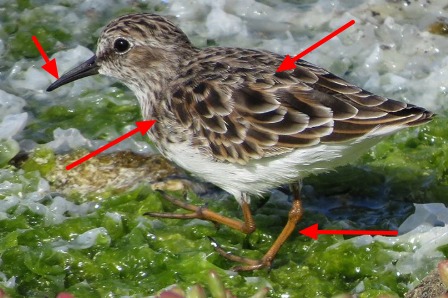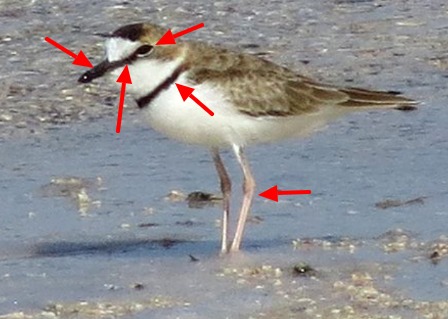Shorebird Identification Guide for Bonaire
The Shorebird Identification Guide for Bonaire will help visiting birders distinguish between all those “LBJs” (little brown jobs) that all look alike.
Field marks, habitat, size, and similar species are all noted to assist with knowing where and what to look for as you identify the island’s shorebirds–both resident and migratory.
Bonaire Shorebird Identification
What are shorebirds?
Shorebirds are species that are typically found on the shore, in fresh, salt, or brackish wetlands, salt ponds, mud and tidal flats, lagoons, mangrove forests, or other coastal environments. These birds are constantly probing or scanning the shoreline for marine invertebrates, their favorite food in many cases. They often have specialized bills which are long, slender, and pointed, which assist with probing in mud or sand or between rocks.
Why shorebirds need the Caribbean.
Most shorebird species you will observe on Bonaire breed in northern North America, but some are resident breeders right here on the island.
Many travel long distances between breeding and wintering grounds. For example, the Red Knot will travel 9,300 miles/15,000 km during migration. These migratory shorebirds rely on Bonaire, and other Caribbean islands, for rest and relaxation, allowing them the time and resources to refuel their energy reserves or simply spend the winter in warm conditions (over-wintering).
The Shorebird Identification Guide for Bonaire will help build confidence in identifying shorebirds you may see while birding.
Shorebirds are notoriously difficult to identify! Here are some tips and tricks to help you with shorebird identification.
Know what species to expect when on Bonaire.
Prepare yourself in advance so you know what species to expect when on Bonaire. The Bonaire Shorebird Identification Guide provides visual clues to the most common shorebirds observed here, as well as size, expected habitat, and similar species.
For shorebird identification, note the bird’s shape and size first.
The first thing to note is the bird’s shape because, with shorebirds, the plumage can look nearly identical from species to species, especially in winter (non-breeding) plumage which becomes rather drab. Check the bill’s shape first, as unique bills can immediately get you pointed in the right direction. Is it long or short? Is it straight or curved upward or downward? How thick is the bill? Be sure to also check the legs, the size of the head, or if the bird is compact in size or elongated. If you can compare its size to another nearby shorebird, that can also assist with narrowing down the possibilities.
How does the bird forage?
Get to know how shorebirds forage as the feeding technique the bird utilizes may give you a clue to its ID. For example, the Short-billed Dowitcher feeds by drilling vertically up and down, much like a sewing machine. If you can observe the bird’s foraging technique, you can immediately narrow down the possible species.
The call might assist you with the shorebird’s identification.
Listen to it: Can you hear it call? Many shorebirds that visit the Caribbean have distinctive calls that can provide immediate identification.
Note the bird’s behavior.
Note the shorebird activities and its behavior: In addition to its foraging style, note if it is social or solitary? Is it with any other shorebird species and if so, which? How many birds of the same species do you see?
Note the bird’s habitat.
Many shorebirds have definite preferences for either saltwater or freshwater. Others may prefer mudflats, salt ponds, or mangrove forests. If you’re unsure of its identification, check to see which bird has a preference for the habitat you are viewing.
Is the bird likely to be seen when you are visiting Bonaire?
Note the timing: Is it inside or outside of the normal window of opportunity to see this bird? For example, is it a bird that is normally observed on Bonaire year-round, such as the Black-necked Stilt? Or, like the Wilson’s Snipe, is it a migratory bird that is usually only found in the winter months?
Additional shorebird identification clues.
Once you think you have the answers based on the universal tips and tricks, you’ll find that other factors may complicate the shorebird identification process!
- Light may be diffused, warm (early morning and late afternoon), cool (mid-day), behind clouds, or out in force. Any of these conditions can play havoc with your shorebird identification. The changing light may make the colors of plumage, bills, and feet and legs appear different!
- The color of the legs is commonly used for shorebird identification. However, for many wading shorebird species, the legs might be covered in mud, masking the true color.
Remember, if all else fails, and you are unable to identify your shorebird, try to take an image with your phone. The Merlin Bird ID app will allow you to upload the image, and their database will provide you with its best guess as to the identification of your shorebird.

Take-away tip: Use multiple clues to properly identify Bonaire’s shorebirds!
Common Shorebirds on Bonaire
In the Shorebird Identification Guide for Bonaire, you’ll find the shorebird species most commonly observed here. Shorebirds can be found year-round, but there is greater diversity as well as higher numbers observed in the winter season.
The guide is organized by the size of the shorebird, so you can easily jump to the appropriate section.
The Shorebird Identification Guide for Bonaire is sorted by size–largest to smallest.
Large Shorebird Identification
> 14 inches/35 cm
American Oystercatcher
⋅ large black, brown, and white shorebird
⋅ bright orange/red thick bill
⋅ large yellow eye with a red eye ring
⋅ pinkish legs
⋅ saltwater environments with rocky shores and tidal pools
Size:
⋅ 16-18 inches/41-46 cm
⋅ none
Whimbrel
⋅ large heavy shorebird
⋅ long, decurved bill
⋅ long, grayish legs
⋅ two black stripes on the crown, and one through the eye
⋅ bill is black, but the base of the lower mandible is pinkish to reddish
Normal habitat:
⋅ mudflats of salt ponds and tide pools or lagoons, but also sandy beaches
Size:
⋅ 15 inches/38 cm
⋅ none
Willet
⋅ in winter plumage, mainly gray with white underparts
⋅ white eyeline
⋅ in flight, displays a bold black and white wing pattern
⋅ lagoons, salt pans, mudflats, and mangroves
⋅ can also inhabit freshwater ponds
Size:
⋅ 15 inches/38 cm
Similar species:
⋅ Hudsonian Godwit
Hudsonian Godwit
⋅ a large shorebird with very long dark legs
⋅ very long and dark, slightly upturned bill, with pink at the base
⋅ in all plumages, note the black tail, white rump, and black underwing
⋅ white eye stripe
Normal habitat:
⋅ mostly prefers freshwater habitats or rain ponds
Size:
⋅ 15 inches/38 cm
Similar species:
⋅ Willet
Greater Yellowlegs
Field marks:
⋅ large mostly grayish-brown shorebird
⋅ wings patterned with white spots
⋅ brownish streaks on neck and breast
⋅ long, black bill, thicker than the similar Lesser Yellowlegs
⋅ long, yellow legs
For easy ID: Note the length of the bill versus the width of the head. If the bill is longer, it is a Greater Yellowlegs.

Normal habitat:
⋅ saltwater environments such as salt pans
⋅ also inhabits freshwater ponds
Size:
⋅ 14 inches/36 cm
Similar species:
⋅ Lesser Yellowlegs
Medium Shorebird Identification
8 to 14 inches/20-35 cm
Southern Lapwing
Field marks:
⋅ medium-sized shorebird
⋅ pink legs
⋅ red eye with a red eye ring
⋅ small black crest
⋅ pink bill with a black tip
⋅ brownish upperparts with a white belly and black chest
Normal habitat:
⋅ marshy freshwater habitats
Size:
⋅ 13-15 inches/33-38 cm
Similar species:
⋅ none
Black-necked Stilt
Field marks:
⋅ medium-sized black and white shorebird
⋅ long, thin black bill
⋅ long, pink legs
⋅ saltwater environments such as mangrove wetlands and salt pans
⋅ also inhabits freshwater ponds
Size:
⋅ 13-16 inches/33-41 cm
⋅ none
Short-billed Dowitcher
Field marks:
⋅ medium-sized grayish-brown shorebird
⋅ yellow-green legs
⋅ white line above the eye, with a black line running through the eye
⋅ slender black bill
⋅ its bottom does not tilt up when feeding
⋅ barring on sides
Normal habitat:
⋅ freshwater or saltwater ponds
Size:
⋅ 11 inches/28 cm
⋅ Long-billed Dowitcher
⋅ Stilt Sandpiper
Lesser Yellowlegs
Field marks:
⋅ large mostly grayish-brown shorebird, although generally smaller than the Greater Yellowlegs
⋅ wings patterned with white spots
⋅ brownish streaks on neck and breast
⋅ long, black bill, thinner than the similar Greater Yellowlegs
⋅ long, yellow legs, but joints are not as thick as in Greater Yellowlegs
For easy ID: Note the length of the bill versus the width of the head. If the bill is shorter, it is a Lesser Yellowlegs.

Normal habitat:
⋅ saltwater environments such as salt pans
⋅ also inhabits freshwater ponds
Size:
⋅ 10.5 inches/27 cm
Similar species:
⋅ Greater Yellowlegs
⋅ Solitary Sandpiper
Red Knot
⋅ medium-sized mostly grayish shorebird
⋅ appears more “plump” than other shorebirds
⋅ straight black bill with a slight droop at the end
⋅ dark legs in winter plumage
⋅ may display a cinnamon-colored breast and yellowish-green legs (breeding plumage remnants), if seen around migration times
Normal habitat:
⋅ saltwater habitats such as salt pans
Size:
⋅ 10.5 inches/27 cm
Similar species:
⋅ Sanderling
Wilson’s Snipe
Field marks:
⋅ medium-sized dark shorebird
⋅ long, thin, straight bill
⋅ striping on head
⋅ short yellow-greenish legs
Normal habitat:
⋅ prefers freshwater ponds with grassy edges
Size:
⋅ 10.5 inches/27 cm
Similar species:
⋅ None
Black-bellied Plover
⋅ medium-sized mostly grayish-brown shorebird
⋅ in winter plumage, displays a white belly (in summer plumage, it becomes black)
⋅ large eyes
⋅ thick “plover-like” black bill
⋅ black feet
⋅ shows a “black armpit” in flight, which can help distinguish it from the American Golden Plover, which lacks that field mark
Normal habitat:
⋅ saltwater habitats such as rocky shores, sandy beaches, salt pans, mangrove edges
⋅ also inhabits freshwater ponds
Size:
⋅ 10-13 inches/25-33 cm
Similar species:
⋅ American Golden Plover
American Golden Plover
⋅ medium-sized golden-brown shorebird with gold-flecked speckles on the upperparts
⋅ in winter plumage, underparts are mottled (in summer plumage, they become black)
⋅ dark eye with a prominent white eyebrow
⋅ dark legs
⋅ black bill
⋅ wingtips extend well beyond the tail
⋅ if seen in flight, the American Golden Plover lacks the “black armpits” of the similar species, the Black-bellied Plover
Normal habitat:
⋅ prefers mudflats of salt pans and shores of fresh-water ponds
⋅ temporary rain ponds
Size:
⋅ 9-11 inches/23-28 cm
Similar species:
⋅ Black-bellied Plover
Kildeer
⋅ medium-sized brownish shorebird with white underparts
⋅ pale pinkish legs
⋅ white forehead bordered by a black line, white eye-line, and collar
⋅ distinctive breast with two black bands
⋅ stout black bill
⋅ prefers muddy shores of lagoons, mangroves
⋅ temporary rain ponds
Size:
⋅ 9-11 inches/23-28 cm
Similar species:
⋅ none
Pectoral Sandpiper
Field marks:
⋅ medium-sized brownish shorebird
⋅ yellow legs
⋅ distinctive breast demarcation between streaking and white
⋅ dark bill, but lighter at the base
Normal habitat:
⋅ freshwater ponds or rainfall ponds
Size:
⋅ 9 inches/23 cm
Similar species:
⋅ Least Sandpiper (although the Least Sandpiper is much smaller)
Ruddy Turnstone
⋅ medium-sized and stocky brownish shorebird, with ruddy highlights, especially when in breeding plumage
⋅ bright orange legs
⋅ short and stout black bill, slightly upturned at the end
⋅ the face displays unique black and white markings
⋅ ruddy color can be observed on Bonaire when the bird has just arrived from the north and has remnants of breeding plumage (as pictured here); the normal winter plumage has less intense coloration
⋅ the Ruddy Turnstone is the only shorebird that is curious and may closely approach you
Normal habitat:
⋅ rocky shorelines
Size:
⋅ 8-10 inches/20-25 cm
Similar species:
⋅ None
Solitary Sandpiper
Field marks:
⋅ medium-sized grayish-brown shorebird
⋅ yellow-green legs
⋅ distinctive white eye-ring
⋅ slender black bill
Normal habitat:
⋅ freshwater ponds or brackish ponds
Size:
⋅ 8.5 inches/22 cm
Similar species:
⋅ Lesser Yellowlegs
Stilt Sandpiper
Field marks:
⋅ medium-sized grayish-brown shorebird
⋅ yellow-green legs
⋅ white eye strip
⋅ long curved dark bill with a thick base and a slightly drooped end
⋅ its bottom tilts up when feeding
⋅ in-flight shows white rump
Normal habitat:
⋅ freshwater or saltwater ponds, such as salt pans
Size:
⋅ 8.5 inches/22 cm
Similar species:
⋅ Short-billed Dowitcher
Sanderling
Field marks:
⋅ medium-sized light gray shorebird with white underparts (in winter plumage)
⋅ black legs
⋅ short and stout black bill, slightly decurved
⋅ when visible, a black shoulder can be used for identification
Normal habitat:
⋅ sandy beaches or sandbars, such as those found in the salt pans
Size:
⋅ 8 inches/20 cm
Similar species:
⋅ Red Knot (in winter plumage)
Small Shorebird Identification
< 8 inches/20 cm
Spotted Sandpiper
⋅ small grayish-brown shorebird with white underparts in winter plumage
⋅ pale legs
⋅ white eye-ring, with a white eye line
⋅ exhibits tail-bobbing when walking or standing
⋅ a white spur is visible in front of the wing bend
⋅ if the bird has just arrived from the north, the breast and underparts can be highly spotted
Normal habitat:
⋅ mangrove marshes
⋅ mudflats of the salt pans or freshwater ponds
Size:
⋅ 7.5 inches/19 cm
Similar species:
⋅ Solitary Sandpiper, because both species exhibit tail-bobbing, but the Spotted Sandpiper is smaller than the Solitary Sandpiper
White-rumped Sandpiper
Field marks:
⋅ shows a white rump in-flight
⋅ black legs
⋅ white eyebrow
⋅ black bill with a slight droop at the end
⋅ at rest, the wingtips extend beyond the tail
Normal habitat:
⋅ prefers freshwater ponds, but can also be observed in the salt pans or inside bays such as Lagun
Size:
⋅ 7.5 inches/19 cm
Similar species:
⋅ Baird’s Sandpiper, but the Baird’s Sandpiper is very rare on Bonaire
Wilson’s Plover
Field marks:
⋅ small grayish-brown shorebird
⋅ pinkish flesh-colored legs
⋅ large black eye
⋅ a black bill which is thick and stout
⋅ single breast band (black in males and reddish-brown in females)
Normal habitat:
⋅ mangrove marshes
⋅ mudflats of the salt pans
Size:
⋅ 7-8 inches/18-20 cm
Similar species:
⋅ none
Semipalmated Plover
⋅ small grayish-brown shorebird with white underparts and white forehead and a dark mask through the eye
⋅ yellow-orange legs
⋅ large black eye with a red-orange eye ring
⋅ a short black bill which is thick and stout, with an orange base
⋅ a single black breast band
⋅ feet are slightly webbed
Normal habitat:
⋅ ocean shorelines
⋅ mudflats of the salt pans
Size:
⋅ 6.5-7.5 inches/16.5-19 cm
Similar species:
⋅ Collared Plover
Snowy Plover
⋅ small brownish-gray shorebird with light underparts and a white forehead and face
⋅ dark gray legs
⋅ large black eye
⋅ black bill
Normal habitat:
⋅ sand flats of inner bays or salt pans
⋅ also prefers partly dry lagoons
Size:
⋅ 6.5 inches/16.5 cm
Similar species:
⋅ none
Semipalmated Sandpiper
⋅ small brownish shorebird (can be grayer in winter plumage) with light underparts and eyebrow
⋅ one of the three “peeps”–three small shorebirds which are difficult to differentiate; the Semipalmated Sandpiper has black legs and a short black bill with a thin base
⋅ feet are slightly webbed
Normal habitat:
⋅ the shallow water of lagoons, inner bays, and salt pans
⋅ more likely to forage in the water than the Least Sandpiper
Size:
⋅ 6.5 inches/16.5 cm
Similar species:
⋅ Western Sandpiper (which has a longer, thick-based bill with a slight droop at the tip)
⋅ Least Sandpiper (which has yellow legs)
Western Sandpiper
Field marks:
⋅ small brownish shorebird (can be grayer in winter plumage) with light underparts and eyebrow, gray on the upper breast
⋅ one of the three “peeps”–three small shorebirds which are difficult to differentiate; the Western Sandpiper has black legs and a long, thick-based black bill which droops slightly at the tip
⋅ can sometimes appear to be heavier in the chest than the similar Semipalmated Sandpiper
Normal habitat:
⋅ the shallow water of lagoons, inner bays, and salt pans
⋅ more likely to wade into deeper water and submerge its head more often than the similar Semipalmated Sandpiper
Size:
⋅ 6.5 inches/16.5 cm
Similar species:
⋅ Semipalmated Sandpiper (which has a shorter straight bill with a thinner base and also shorter legs)
⋅ Least Sandpiper (which has yellow legs)
Least Sandpiper
Field marks:
⋅ small brownish shorebird (can be grayer in winter plumage) with light underparts
⋅ one of the three “peeps”–three small shorebirds which are difficult to differentiate; the Least Sandpiper is the only one of the three with yellow legs
⋅ slender dark bill with a small droop at the tip
⋅ streaking on the breast
Normal habitat:
⋅ muddy shores of the salt pans, freshwater ponds, or inner bays
Size:
⋅ 6 inches/15 cm
Similar species:
⋅ Semipalmated Sandpiper (which has black legs)
⋅ Western Sandpiper (which also has black legs)
Collared Plover
Field marks:
⋅ small brownish shorebird with light underparts
⋅ pinkish legs
⋅ large dark eye
⋅ slender dark bill
⋅ white forehead with a black/orange crown and dark stripe between the eye and bill
⋅ single dark breast band
Normal habitat:
⋅ sand flats of inner bays or the salt pans
Size:
⋅ 5.5-6 inches/14-15 cm
Similar species:
⋅ Semipalmated Plover
Get In Touch
Get in touch with Susan to check availability for the dates you are visiting Bonaire.
Consent: By using this form you agree with the storage and handling of your data by this website.


